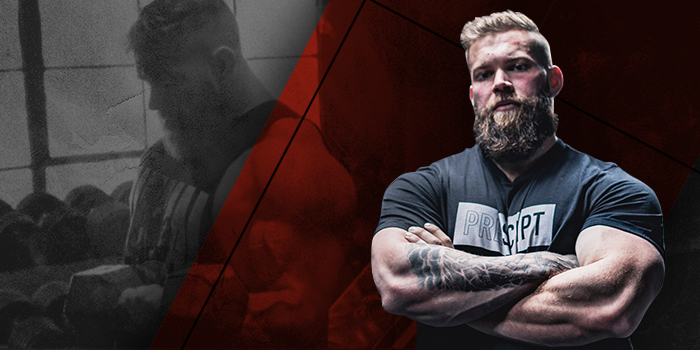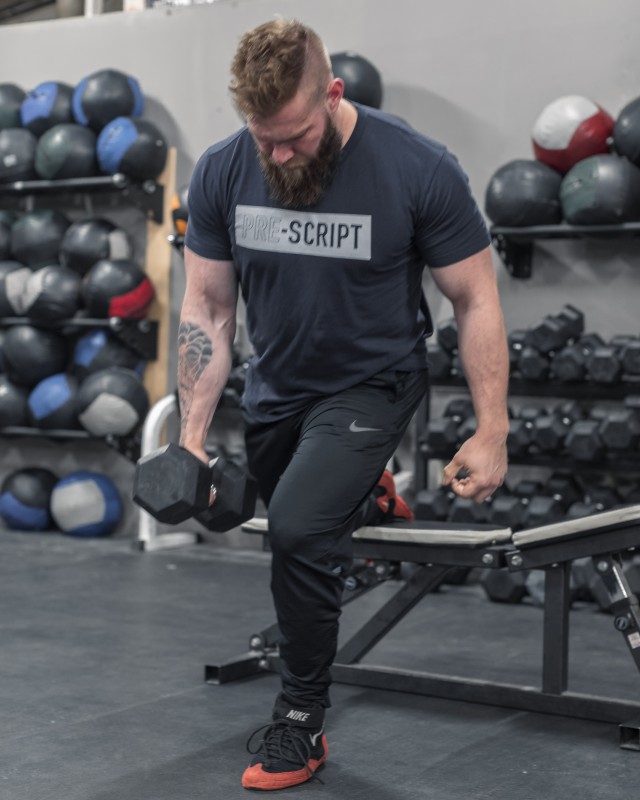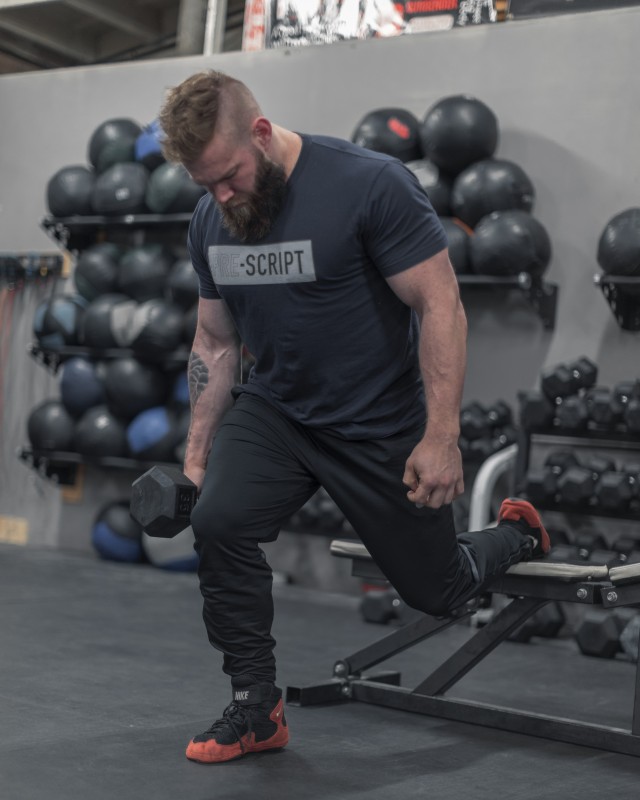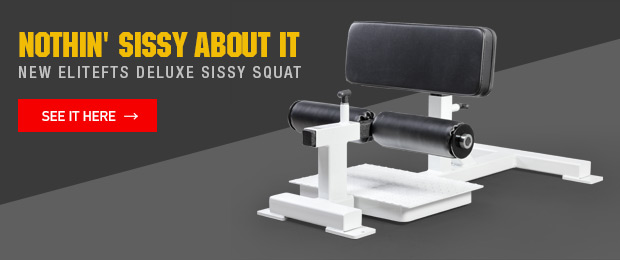
The field of strength and conditioning has undergone somewhat of an evolution in recent years. With the emergence of new personalities and new training styles being shared over social media platforms daily, it can be tough for new coaches to keep a finger on the pulse of what’s best for their athletes.
But lost somewhere in the new gimmicks and double taps, there are some staple movements that I think all coaches should have a fundamental understanding in, and when it comes to dynamic correspondence to sports performance, it's hard to think of an exercise more worthy of a deep dive than the Bulgarian Split Squat.
RELATED: Heavy Bag Split Squat Functional Position Series
The Bulgarian Split Squat, or rear foot elevated squat, can be performed in many ways and with many different implements, but for the purpose of this article, we are going to discuss loading the Bulgarian Split Squat with dumbbell. And no, that wasn’t a typo: “dumbbell,” singular.
We are going to go over the main differences involved when unilaterally loading the Bulgarian Split Squat with a dumbbell on either side of the stance leg and what benefits can be derived and some theory behind why we should load which pattern.

Dumbbell Opposite Side as Stance Leg
This is the most common default when people are posed with the task of unilaterally loading the Bulgarian Split Squat. Why? Well, there are a few reasons:
- It’s inherently more stable: If stability can be calculated by looking at the distance of the combined center of mass between of the dumbbell and the athlete and the athlete’s base of support, the unilateral load in the opposite shoulder keeps that combined center of mass closer to the base of support and therefore is more stable.
- It replicates the gait cycle: If you think about how we perform locomotion, we synergize contralateral hip and shoulder flexion. So, if we think about performing a rep of the Bulgarian, as we lower in the eccentric of each rep, we’re loading into contralateral hip and shoulder flexion.
When loading the Bulgarian Split Squat in the opposite side of the stance leg, we are loading through that gait cycle pattern, which is to say we are loading through a rotational plane. So when utilizing this variation of loading parameter, we need to consider the anterior oblique sling. As we lower in the eccentric on every rep, we are demanding more stability through the external oblique on the side where the dumbbell is loaded, and we are also calling upon more stability from the high adductors/ hip flexors through the stance leg (pectineus and adductor brevus, primarily).
This type of load, which is more true of gate cycle and reinforces stability across the anterior oblique sling, is a variation that I prefer to use in season, as it allows us to both better prepare and better screen for any dysfunction across this sling that might manifest itself on the field, where the athletes will experience the greatest amount of force and accumulate the greatest amount of fatigue.

Dumbbell on the Same Side as Stance Leg
The default second unilateral loading pattern is going to have the dumbbell loaded in the same hand as the foot that’s on the ground. I understand that this may seem like a trivial difference, especially if we consider that the loads being used that will be so submaximal relative to the athlete's output potential, but it’s the subtle nuances that are going to make the biggest differences when it comes to effective exercise selection in programming.
When we load this unilateral pattern, we recruit a much different internal network of stability. Where the previous way of loading (opposite hand to stance leg) created a load in instability through the rotational plane, this way of loading creates more of a pure lateral instability force on the body.
READ MORE: Physics 101 for Performance Enhancement
In turn, we end up using more of the glute med on the stance leg to laterally stabilize the hip in conjunction with the contralateral quadratus lumborum to stabilize the lumbar spine on the opposite side.
This is an effective pattern to load in the offseason when that moment of highest force on your athlete is going to be from a barbell (squatting or deadlifting) where a lack of glute med and quadratus lumborum stability are most likely to rear their heads, either as a knee caving in under load or a hip shift under load.
Conclusion
There is no such thing as a bad exercise; an exercise without and intent is a bad exercise. So whether or not you utilize the benefits of varied unilateral loading parameters of the Bulgarian Split Squat in your training or not, you should always be using critical thinking when making efficient and effective exercise selections for you and your athletes.
Stay strong,
Dr. Jordan Shallow, D.C.











The unilateral front rack would make it slightly more unstable depending on the distance between the load and the center of mass. A centered goblet position would elicit minimal instability, and more load. I prefer using a goblet as a stepping stone to an exercise with more load potential like a SSB Hatfield Bulgarian